1928 experimental concrete reservoir for Permian Basin oil became a water park three decades later. For one day.
Tourists traveling I-20 in West Texas should not miss the Monahans oil museum in the heart of the Permian Basin. Not just a collection of artifacts, the Million Barrel Museum’s big attraction is a former experimental oil tank the size of three football fields.
The Permian Basin once was called a “petroleum graveyard” — until a series of oilfield discoveries beginning in 1920 brought exploration companies to the vast, arid region. Completed near Big Lake in 1923, the Santa Rita No. 1 well alone would endow the University of Texas with millions of dollars.
But as oilfield discoveries grew, the lack of infrastructure for storing and transporting large volumes of oil proved to be a problem.
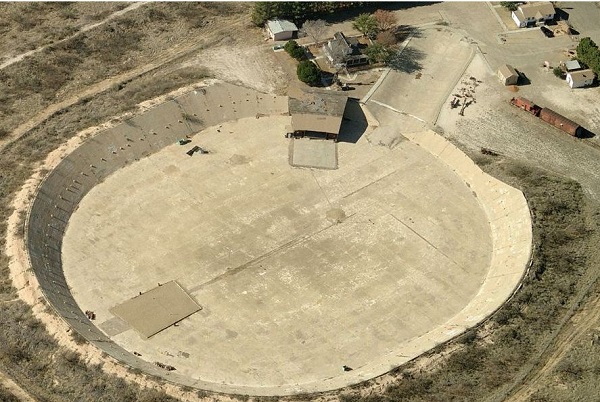
The Million Barrel Museum’s 525 foot by 422 foot main attraction, originally built to store Permian Basin oil in 1928, became a water park for just one day in 1958. Photo courtesy Top of Texas Gazette.
“There were great oil discoveries around 1926 and few places to put the oil. No pipelines or tanks,” explained Elizabeth Heath, chairwoman of the Ward County Historical Commission, in 2010.
A single well in the Hendricks field could produce 500 barrels of oil a day. “Unfortunately, the Roxana Petroleum Company — later absorbed by Shell Oil — did not have a pipeline to get all that oil to a refinery,” added journalist Mike Cox in his 2006 “Texas Tales” column. To solve the problem, the company decided to build a giant concrete reservoir.
Using mule-drawn equipment, workers completed an excavation and laid wire mesh over the packed earth, Cox explained. Contractors then started pouring tons of concrete.

In Monahans, Texas, the Million Barrel Museum tells the story of how a lack of pipelines during 1920s West Texas oil discoveries led to the construction of a massive concrete tank. Photo courtesy Texas Historical Commission.
“By late April 1928 workers hammered away at a wooden cover for the colossal tank, placing creosote-soaked support timbers at 14 foot intervals across the sprawling reservoir floor,” Cox reported. The timbers supported a domed redwood roof covered with tar paper. Completion of the walls, pillars and roof took just three months because construction took place 24 hours a day.
“When Roxana injected a million barrels of oil into the tank, the weight bearing down on the concrete amounted to four hundred million pounds of pressure. One thing Roxana’s engineers apparently forgot to take into consideration was the weight of crude,” he noted. One gallon of oil weighed nearly eight pounds.
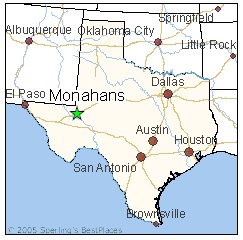
Founded in 1881, Monahans incorporated two years after oil was discovered in 1926.
“It seemed like a good idea at the time,” added Ward County historian Elizabeth Heath. She said a Monahans High School math teacher measured the dimensions of the storage tank at 525 feet by 422 feet. Its concrete covered earthen walls rose 30 feet tall with a slope of 45 degrees. When finished, problems quickly emerged.
“It didn’t work. It leaked from too many places and the company couldn’t seal it properly,” Heath explained. “When workers poured the cement, they did it in sections, so it made seams all around. You didn’t have caulking like we have today, so oil seeped into the sand.”

Artist’s conception of the “million barrel reservoir” with timbers at 14 foot intervals supporting a redwood roof. Courtesy Ward County Historical Commission.
Although the Monahans oil storage facility soon became known as the “million barrel reservoir,” engineers had actually designed it to hold “a staggering five million barrels of oil,” Cox claimed. It was filled with one million barrels just once.
Despite the tank’s domed, California redwood roof — which included a network of lightning rods — oil also began to evaporate. According to Heath, Shell Oil pumped out the oil and dismantled the wooden structures soon after the start of the Great Depression. Much of the tank’s redwood lumber reportedly ended up in Monahans homes and businesses.
Empty and abandoned, the tank gaped on Monahans’ east side for decades.
Water Park for a Day
Then in 1954, Wayne and Amalie Long purchased the concrete reservoir from Shell. The entrepreneurial Monahans couple had an idea. The Longs believed in the tank’s potential as a community attraction – a water park. To fill the tank, Wayne Long pumped water from wells he drilled nearby.
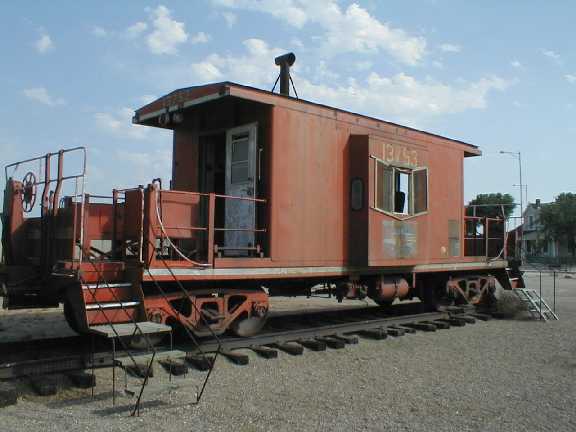
About 35 miles west of Odessa, Texas, the Million Barrel Museum features railroad memorabilia in addition to artifacts from the surrounding oilfields.
Workers constructed a boat ramp from an opening oil company engineers had carved to remove the interior pillars and the roof. On opening day, October 5, 1958, the one-of-a-kind, man-made lake, which the Longs named “Melody Park,” attracted swimmers, boaters, skiers and anglers. A professional ski team from Austin put on an exhibition.
Leaks at the seams forced the water park to close after just one day.
Oil Museum
A 2006 letter by Wallace Dickey Jr., nephew of the Longs, offered a first-hand account of what happened next. “I was there in the summer of 1958, when I was in high school, when they tried to turn it into a stock car racetrack after it would not hold water long enough for fishing and swimming,” Dickey explained. The reservoir was no more.
After his uncle died in 1980, his aunt eventually donated it to Ward County. Left unattended for a few years, Monahans High School students enjoyed visiting the site at night, some adding graffiti to the concrete.
A new chance for life arrived in 1986, when Amalie Long donated the structure and the more than 14 acres surrounding it to the Ward County Historical Commission.
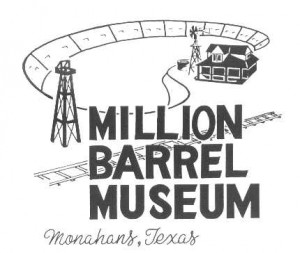
The museum includes a hotel once at the terminus of Monahans-Ft. Stockton Stage Line.
“Her husband wanted it to be a community project, something we could work on for local history,” Heath noted. The community rallied behind the idea of creating a museum. With the help of local teachers and historians, construction of the Million Barrel Museum began in 1986 as part of the Ward County sesquicentennial.
The museum opened with much fanfare on May 30, 1987.
Geologist’s House
By the early 2000s, the museum grounds include the Holman House, carefully moved from west Monahans, farming equipment, a railroad caboose and memorabilia – and oilfield artifacts from the surrounding oilfields. The Holman House, built in 1909, became a hotel and, for a time, a hospital.
Eugene Holman, who grew up in Monahans, was chief geologist for Humble Oil Company in 1926. As president of Standard Oil Company of New Jersey, he appeared on the cover of TIME, which proclaimed the Monahanian its International Oilman of 1947.
In 1960, the American Petroleum Institute awarded Homan the API gold medal of distinguished achievement, which “recognizes exceptional leadership and service to the natural gas and oil industry, the communities in which the industry operates and the broader nation.”
API’s first gold medal was awarded in 1946 to Henry Ford, founder of Ford Motor Company.

Eugene Holman, who grew up in Monahans, was president of Standard Oil of New Jersey when TIME featured him in 1947.
A section of the tank’s wall is now the Meadows Amphitheater and includes a rebuilt roof similar to the original. The imposing concrete walls have witnessed class reunions, craft shows and other community events, including an annual Fajita Cook-off and Tejano Dance held in May. The former oil tank also has hosted rock concerts.
On the first weekend of December, the Million Barrel Museum hosts a Christmas lighting and holiday activities. It is open 10 a.m. to 8 p.m. Tuesday through Saturday, 2 p.m. to 8 p.m. on Sundays in the summer. Admission is free.
Million Barrel Timeline
1923 – The Santa Rita No.1 uncovers the Big Lake oilfield on land owned by the University of Texas. The discovery leads to one of the largest oil booms in the United States. Learn more in Santa Rita taps Permian Basin.
1926-1928 – More discoveries in Ward and Winkler counties (notably the Hendricks oilfield) increase oil production. Storage problems result from a lack of pipelines to reach refineries. In 90 days a 179,500-square-foot concrete oil tank is built in Monahans.
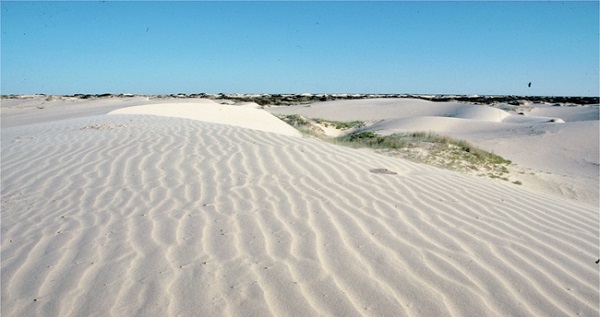
Stretching across the Texas-New Mexico border, Monahans Sandhills State Park, attracts tourists to its 200 miles of sand dunes with 70 foot mounds Photo courtesy Michael Murphy/TxDOT.
1930 – Shell Oil Company abandons use of the tank because of leaks, evaporation – and higher taxes on stored oil.
1935 – Shell Oil removes the roof, pillars and superstructure.
1940s – The tank becomes a parade ground. Former Monahans resident Eugene Holman is president of Standard Oil Company of New Jersey.
1950s – Dancers and spectators gather in the tank for square dancing and community events.
1954 – Monahan residents Wayne and Amalie Long purchase the tank. They considers its potential for the community.
1958 – Wayne Long uses water pumped from wells he drilled to create a water park. Professional water-skiers from Austin put on a show at the grand opening, October 5. “Melody Park” closes the next day because of leaks.
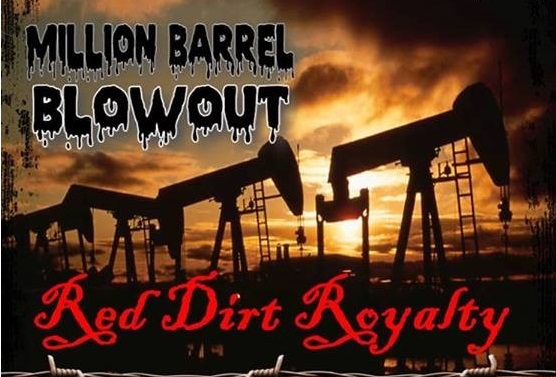
Events and concerts at the oil museum in Monahan, Texas, have included the 2013 Labor Day Million Barrel Blowout, “a tribute to a Texas historical treasure.”
1960s – 1970s The abandoned tank remains a community landmark — and a site for high school graffiti artists.
1986 – In honor of her late husband, Amalie Long donates the tank and surrounding 14.5 acres to the Ward County Historical Commission. As a class project project, local teacher Deolece Parmalee encouraged her students to research the tank’s history and build a scale model.
May 30, 1987 – Grand opening of the Million Barrel Museum. The entrance, funded by the Sid Richardson Foundation, includes two pillars of red sandstone, the same used to build the first Ward County courthouse. Brick paving is from the old Cabot Carbon Black Plant at Wickett, Texas.
A segment of the tank is transformed into a 400-seat amphitheater, complete with a stage and roof built to resemble the original.
_______________________
Recommended Reading: Chronicles of an Oil Boom: Unlocking the Permian Basin (2014). Your Amazon purchase benefits the American Oil & Gas Historical Society. As an Amazon Associate, AOGHS earns a commission from qualifying purchases.
_______________________
The American Oil & Gas Historical Society (AOGHS) preserves U.S. petroleum history. Become an AOGHS annual supporting member and help maintain this energy education website and expand historical research. For more information, contact bawells@aoghs.org. © 2023 Bruce A. Wells. All rights reserved.
Citation Information: Article Title: “Million Barrel Museum.” Authors: B.A. Wells and K.L. Wells. Website Name: American Oil & Gas Historical Society. URL: https://aoghs.org/energy-education-resources/monahans-oil-museum. Last Updated: May 25, 2023. Original Published Date: May 31, 2013.


